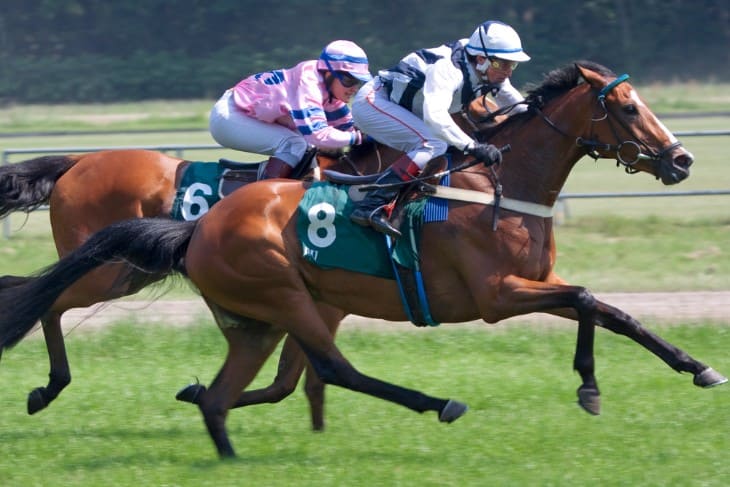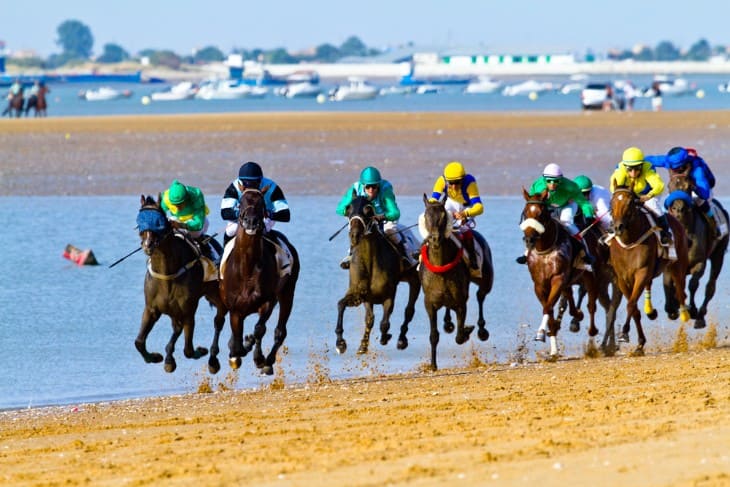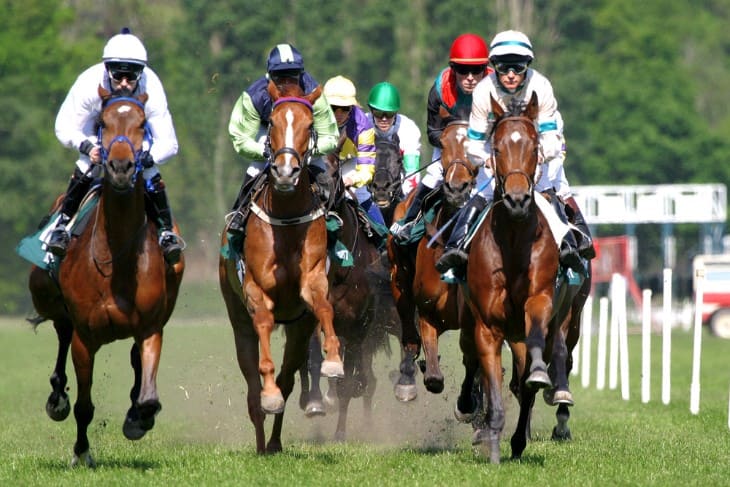- The Basics of Live In-Play Betting
- Key Strategies for Successful In-Play Betting
- The Impact of Technology on Live Betting
- Analysing Odds and Probabilities in Real-Time
- The Role of Bookmakers in In-Play Betting
- Player Psychology and Behaviour in In-Play Betting
- Comparing Pre-Event and In-Play Betting Approaches
- Case Studies: Notable In-Play Bets in Grand National History
- Conclusion
The Grand National is one of the most renowned horse racing events in the United Kingdom, held annually at Aintree Racecourse. Since its first run in 1839, the Grand National has grown in prestige and popularity, attracting a global audience. It is famed for its challenging course, which spans over 4 miles and features 30 fences, making it one of the most testing steeplechase races in the world. The race is not only a test of speed but also of endurance and jumping ability, making it a prime event for in-play betting.
The Grand National stands out due to its unpredictable nature. The large field of runners, typically around 40 horses, and the demanding course contribute to its unpredictability, making it an exciting event for in-play betting. Punters often have to consider various factors such as horse form, jockey experience, and weather conditions when placing their bets. This unpredictability often leads to high odds and the potential for substantial payouts, drawing significant interest from both casual and serious bettors. The Grand National's unique characteristics make it an ideal case study for examining the impact and strategies of in-play betting in horse racing.
The Basics of Live In-Play Betting
Live In-Play Betting in horse racing is an engaging form of betting that allows punters to place bets on a race as it happens. This type of betting contrasts with traditional betting, where all bets are made before the race starts. In-play betting offers a dynamic and interactive experience, as bettors can react to live events during the race. This could include changes in a horse's position, weather conditions affecting the track, or even a jockey's performance.
One of the key elements of live in-play betting is the ability to access real-time information. Bookmakers provide updated odds and market information as the race progresses, allowing bettors to make informed decisions. This immediacy means that bettors need to stay alert and be quick with their decisions, as odds can change rapidly. Understanding how odds are calculated and responding swiftly to changes in the race dynamics are crucial skills for anyone engaging in live in-play betting.
Key Strategies for Successful In-Play Betting
To excel in Live In-Play Betting, several strategies can be employed for greater success. These strategies focus on understanding the race dynamics, managing bets effectively, and making informed decisions based on real-time information.
- Understand Race Dynamics: Knowing the specifics of the race, such as the track layout, distance, and the horses' and jockeys' track records, is vital. A deep understanding of these elements can provide insights into how the race might unfold.
- Bet Management: Managing your bets is crucial in in-play betting. This involves deciding when to place a bet and when to hold off, depending on the unfolding events of the race. It's important to have a clear betting plan and stick to it.
- Monitor Real-Time Information: Staying updated with real-time information about the race is essential. This includes changes in odds, the performance of the horses, and any unforeseen events during the race.
- Quick Decision Making: Due to the fast-paced nature of live in-play betting, quick and decisive action is often required. This means being prepared to make swift decisions based on the latest information.
Implementing these strategies can significantly enhance the betting experience and increase the chances of making successful bets during live in-play betting sessions.

The Impact of Technology on Live Betting
The advent of technology has been a game-changer for Live In-Play Betting in horse racing. The integration of sophisticated technology has transformed how bettors engage with live events, offering a more immersive and informed betting experience. Advanced data analytics and real-time streaming are at the forefront of this technological revolution. These technologies provide bettors with instant access to live race feeds, detailed data about the horses and jockeys, and fluctuating odds, all of which are critical for making informed decisions during in-play betting.
Moreover, mobile technology has played a pivotal role in the widespread adoption of live in-play betting. The convenience of placing bets through smartphones and tablets has allowed bettors to engage with live races from anywhere, breaking the limitations of having to be physically present at the racecourse or a betting shop. This accessibility has not only attracted a broader audience to horse racing betting but also enhanced the overall experience by providing instant updates and betting options at the fingertips of the bettors.
Analysing Odds and Probabilities in Real-Time
In Live In-Play Betting, understanding and analysing odds and probabilities in real-time is crucial. This involves not just keeping track of changing odds but also interpreting what these changes signify in the context of the race.
- Dynamic Odds Analysis: Odds in live in-play betting are dynamic and can change rapidly based on the events of the race. Keeping an eye on these odds and understanding why they are changing (such as a favourite horse falling behind) is key to making informed betting decisions.
- Probability Assessment: Assessing the probabilities of different outcomes based on real-time race developments is essential. This may involve understanding the impact of track conditions, a horse's performance, or a jockey's strategy during the race.
- Risk Management: Managing risk is crucial in live in-play betting. This includes knowing when to place a bet based on the odds and when to hold back. It’s about balancing the potential rewards against the risks.
- Utilising Statistical Data: Access to real-time statistical data about horses, jockeys, and race conditions can provide insights that inform betting decisions. This data can help bettors analyse trends and patterns that may not be immediately obvious.
Understanding and effectively analysing odds and probabilities in real-time is vital for success in live in-play betting, where the betting landscape can shift dramatically within moments.
The Role of Bookmakers in In-Play Betting
Bookmakers play a crucial role in facilitating Live In-Play Betting. They are responsible for setting the odds, managing the bets, and providing a platform for bettors to engage in live betting. The expertise and technology employed by bookmakers determine the quality and reliability of the betting experience. Bookmakers use sophisticated software to adjust odds in real time, based on the developments in a race. This requires a deep understanding of horse racing dynamics and the ability to rapidly process a vast array of data points, from the performance of the horses to changing track conditions.
Additionally, bookmakers are responsible for ensuring a fair and secure betting environment. This includes safeguarding against fraudulent activities and ensuring compliance with betting regulations. The integrity of live in-play betting heavily relies on the trustworthiness and competence of the bookmakers. Bettors depend on them for accurate odds and prompt payouts, making their role indispensable in the world of live in-play betting.
Player Psychology and Behaviour in In-Play Betting
Understanding player psychology and behaviour is fundamental in the context of Live In-Play Betting. The dynamics of in-play betting can significantly influence a bettor's decisions and actions. Several psychological factors come into play:
- Emotional Rollercoaster: In-play betting can be emotionally intense. As the race unfolds, bettors may experience a range of emotions, from excitement to anxiety. These emotions can impact decision-making, leading to impulsive bets or hesitations.
- Loss Aversion: Bettors often exhibit loss aversion, a psychological bias where the fear of losing outweighs the desire for gains. This can lead to bettors prematurely cashing out bets or avoiding risky bets, even when the odds are favourable.
- Overconfidence: Some bettors may become overconfident during live betting, especially if they experience early success. Overconfidence can lead to reckless bets and substantial losses.
- Confirmation Bias: Bettors may selectively focus on information that confirms their existing beliefs or bets. This can lead to ignoring critical data that could impact their decisions.
Understanding these psychological aspects is crucial for both bookmakers and bettors. Bookmakers can design their platforms to mitigate impulsive behaviour, while bettors can benefit from being aware of these biases to make more rational decisions.

Comparing Pre-Event and In-Play Betting Approaches
Live In-Play Betting differs significantly from traditional pre-event betting, and understanding these distinctions is essential for bettors. Here, we compare the two approaches:
- Timing: Pre-event betting occurs before the race starts, while in-play betting takes place during the race. This means in-play bettors have access to real-time information, allowing them to adjust their bets as the race unfolds.
- Odds Fluctuations: In-play betting odds are dynamic and can change rapidly. Pre-event odds, on the other hand, remain relatively stable until the race begins.
- Risk and Reward: In-play betting can be riskier but offers the potential for higher rewards due to changing odds and the ability to react to race developments.
- Strategy: Pre-event betting requires a different set of strategies, focusing on studying form, historical data, and pre-race conditions. In-play betting strategies involve reacting to live events and adjusting bets accordingly.
Understanding the differences between these approaches is crucial for bettors to determine which method suits their preferences and risk tolerance. Both approaches have their merits, and some punters may choose to use a combination of both for a well-rounded betting experience.
Case Studies: Notable In-Play Bets in Grand National History
Examining real-life Live In-Play Betting cases during the Grand National provides valuable insights into the strategies and outcomes of in-play betting. Here are some notable examples:
- Red Rum's Comeback (1973): In the 1973 Grand National, the legendary horse Red Rum made a historic comeback from 30 lengths behind to win the race. Bettors who placed in-play bets on Red Rum during his resurgence benefited from significantly improved odds, turning their bets into substantial wins.
- Auroras Encore's Surprise Victory (2013): In the 2013 Grand National, Auroras Encore, an outsider with high odds, stunned everyone by winning the race. Bettors who sensed an opportunity during the race and placed in-play bets on Auroras Encore enjoyed generous payouts due to the horse's unexpected victory.
- The Fall of Favourites (Various Years): In several Grand Nationals, favourites have fallen or encountered obstacles during the race. Bettors who reacted quickly by placing in-play bets on other contenders benefited from the shifting odds and the misfortunes of the favourites.
These case studies illustrate the dynamic nature of live in-play betting during the Grand National. Successful in-play betting often involves a combination of knowledge, intuition, and the ability to adapt to changing race dynamics.
Conclusion
Live In-Play Betting during the Grand National represents an exciting and evolving aspect of horse racing betting. It has undergone significant transformations, driven by technology and a growing interest in interactive betting experiences.








